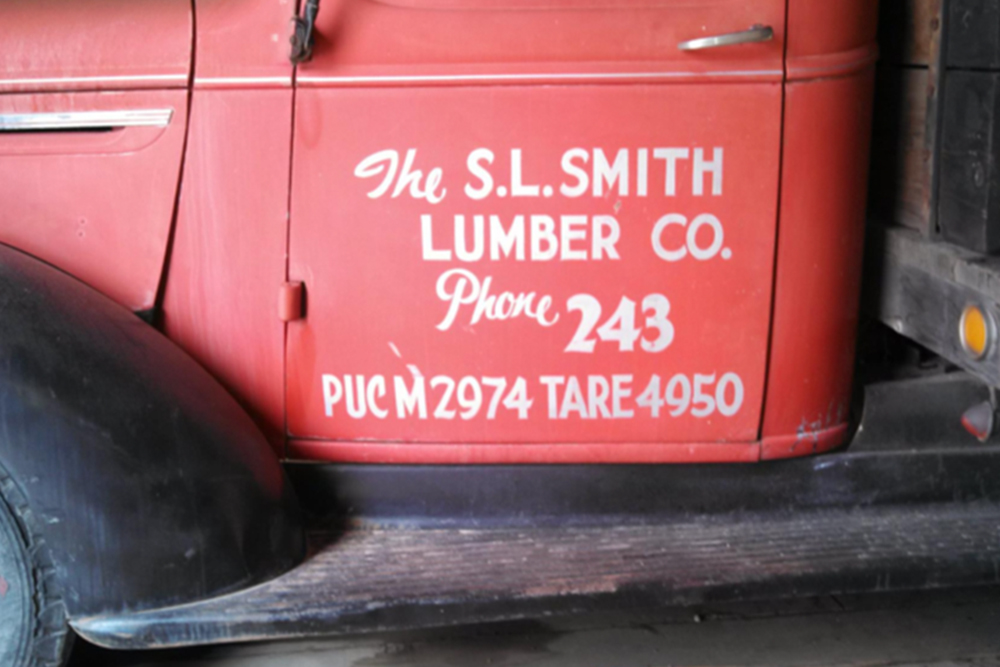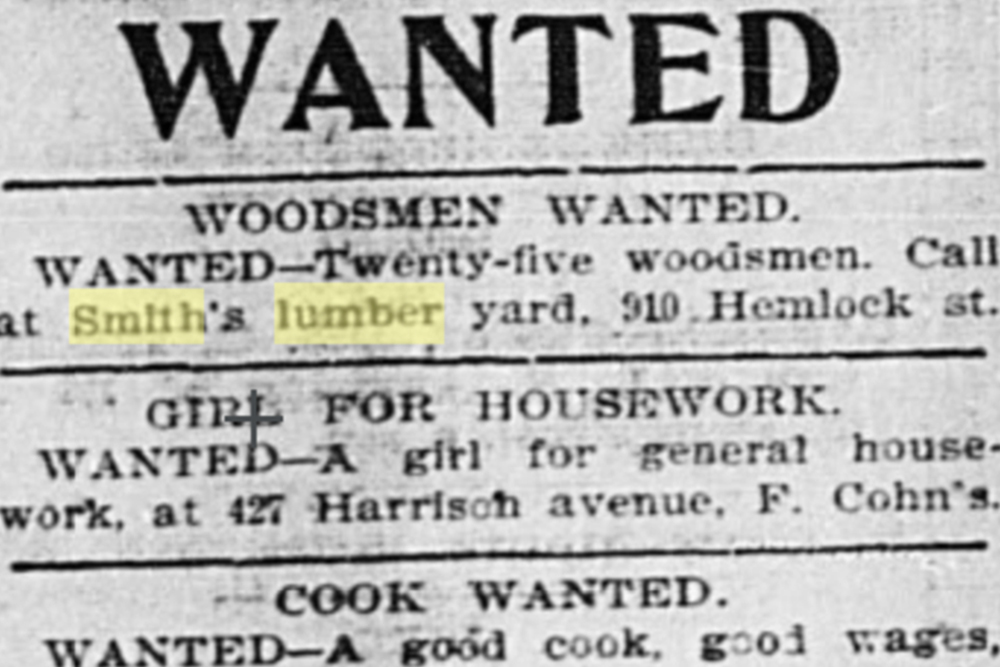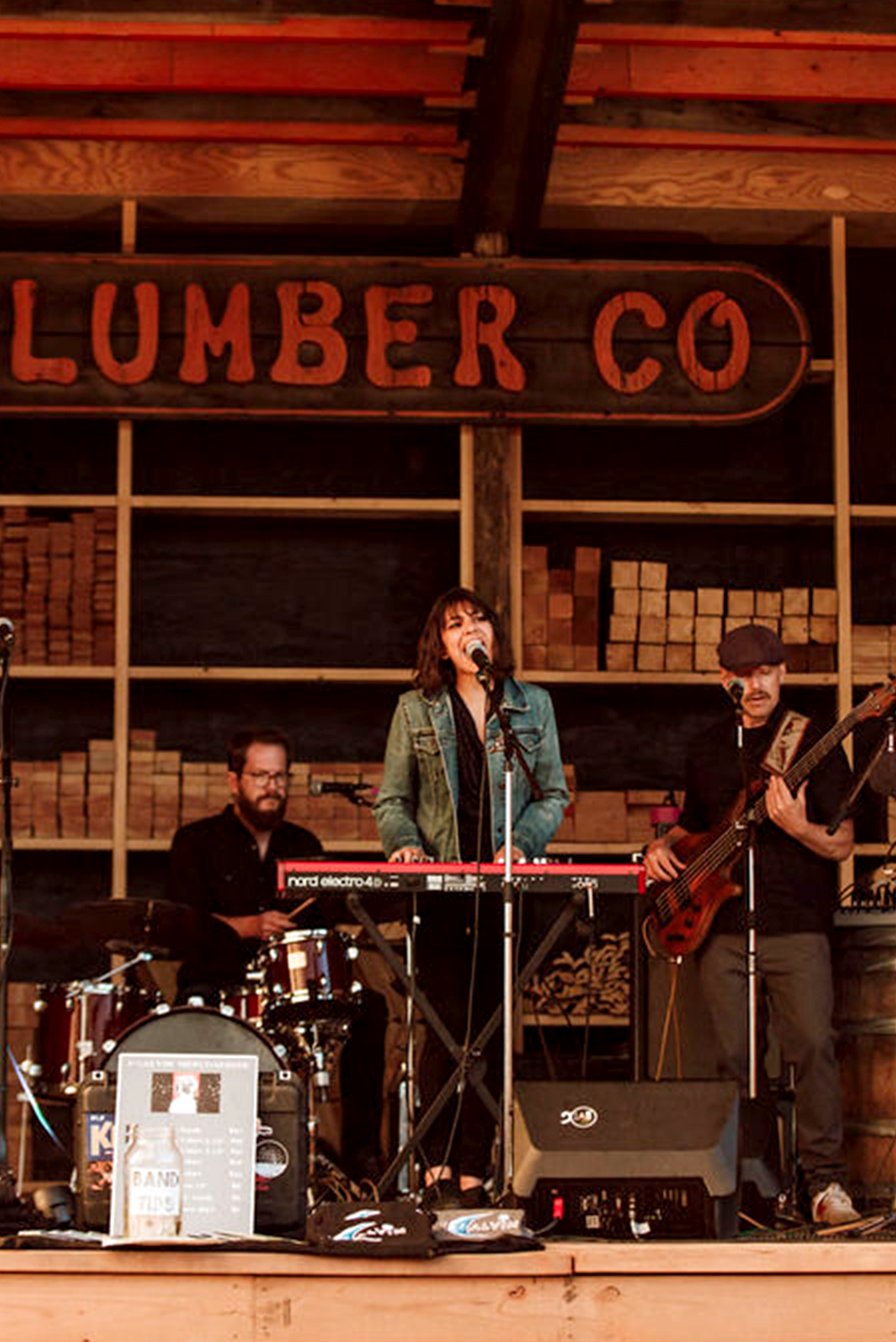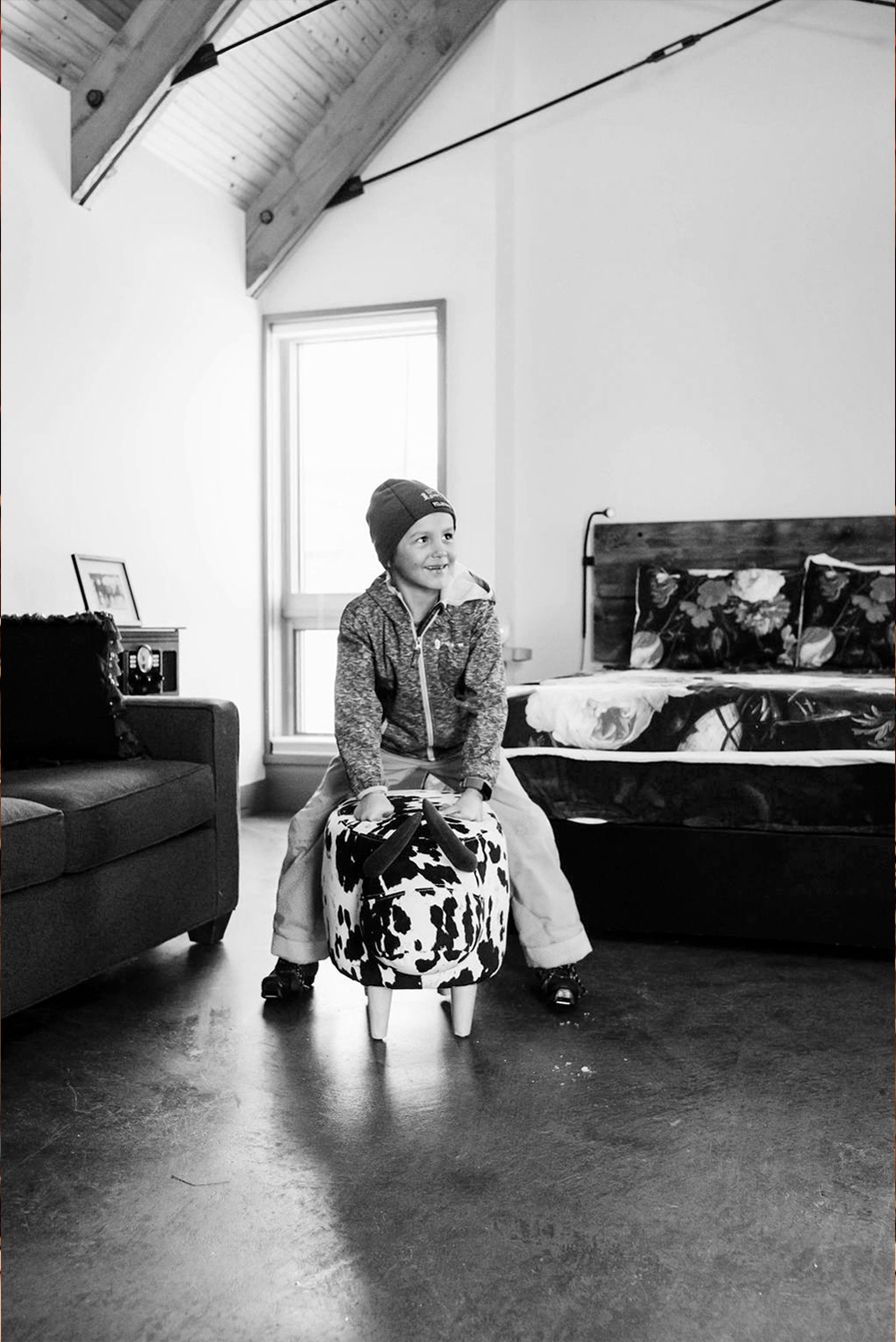Smith Lumber Legacy
The Beginning
Started in 1896 as Smith’s Camp, the business was incorporated as S.L. Smith Lumber in 1900 and spanned four generations of local ownership. It’s Leadville’s oldest continually owned family business. Shadrack Lionel Smith was the first owner and visionary leader. The business then went to Charles, Wilbur, and Dick. They used the depot primarily for storing lumber. Smith Lumber spent 115 years in business and many of us remember getting the tools to build our own houses from the lumber yard.

Founder of Smith Lumber, Shadrack Lionel Smith (front and center), circa 1900

A trusted pick up truck, in service for most of the S.L. Smith Lumber era.

An ad in the Herald Democrat placed Jan 3, 1900 by S.L. Smith Lumber.
Historical Background
Beyond the treacherous terrain and weather, the building of the “High Line” into Leadville by the D.S.P. & P. was fraught with many difficulties. Disagreements between the D.S.P. & P. and the Denver & Rio Grande, the city, and property owners all added to the delays. Examples of these difficulties include when the city arrested D.S.P. & P. workers in 1883; a murder of a rival agent after the D. & R.G tried to lure D.S.P. & P. workers off the project; and property owners along the line that filed suits to stop work. The weather conditions also posed hardships for the rail line workers. They were brought in by the D.S.P. & P. from back East, and did not have proper clothes to work in Leadville. Many got sick, catching pneumonia as early as August, and filled the local hospitals and the Lake County Poorhouse.
The D.S.P. & P. had until February 5, 1884 for the D.S.P. & P. to complete its line into Leadville, according to the agreement between the two railroads. The last section to be constructed that portion just outside and inside the city limits. In August 1883, the D.S.P. & P. purchased twenty-four acres east of the Denver & Rio Grande depot and north of 10th Street om Leadville. This purchase started the rumor mill in Leadville wondering where the new freight depot would be located. According to a local newspaper, “There is no conclusion which can be arrived at except that the Denver and South Park, and Union Pacific Company, have purchased this ground for a freight depot for the new road,” although another article in that same newspaper cautioned that “
The location of the freight and passenger depots of the road is, of course, a matter of conjecture. A gentleman known to have confidential relations with the railroad . . . in a guarded manner intimated that the depot matter had not yet been definitely determined upon. Two locations were under discussion . . . but this was a problem which did not necessarily need to be determined upon for some time, “because . . . it will be nearer five than two months before the road will be completed.”
The newspaper then reported that one idea of the railroad company, “and the one that meets the most favor,” was to place the freight depot at Ninth and Poplar, and the passenger depot at Eighth and Poplar. This had the benefit of being cheaper ground to purchase, but was more remote from the business center. In fact, this preferred location was selected, and construction was started shortly thereafter.
On February 5th, 1884, the D.S.P. & P. completed the line in Leadville by having a large numbers of extra crews laying track night and day. The company celebrated its completion with a ceremony that started with deafening locomotive whistles, followed by the entry into town by a special engine and car carrying South Park Officials. However, heavy snowstorms prevented the line’s immediate and regular use due to a series of blizzards that struck that year. By the time the tracks were cleared in late spring, there was considerable damage to the track. Therefore, maximum operations did not really start until September 1884. At that time, the Leadville Democrat noted that the D.S.P.&P. had completed “on the corner of Ninth and Hemlock streets, a handsome and commodious freight depot . . . and has purchased and remodeled as dwelling at 327 East Eight street for temporary use as a passenger station.” The company started with two freight trains a day each way over the new line. The evening freight from Denver arrived in Leadville for delivery at 10 o’clock the next morning, a gain of seven hours in time.
The company felt it necessary to once again celebrate the opening of the new line, so an excursion was planned for October 26th, 1884. The company sold 312 tickets, including one to Doc Holliday. Although Holliday had been living quietly in Leadville for nearly two years, he had just shot an ex-policeman in August of that year – an event that possibly made the other passengers nervous. As it was, several drunks tore up seating on the trip, and one gambler (likely not Holliday) pulled out a gun on passengers.
In 1889, the D.S.P. & P. became the Denver, Leadville & Gunnison Railroad after the D.S.P. & P.’s foreclosure. The frame dwelling continued to serve as the passenger station until 1893 when the brick station was built on East 7th Street. As mining in Leadville and surrounding areas fell off around the turn of the century, the “South Park” attempted to abandon the High Line, but court action following a protest at Breckenridge resulted in the continuance of the line. Traffic continued with a daily mixed train between Denver and Leadville. The Great Depression saw further reduction in usage, and in 1937 the High Line was abandoned. By this time, the depot was owned and used by the S. L. Smith Lumber Company as a lumber warehouse. It continued to be used by the lumber company until it closed about five years ago. Sometime after 1937, the lumber company built a small shed on the north side of the freight depot; this addition does not date from the period of significance for the NHL historic district. As for the rail line, during World War II the C&S changed the narrow gauge rail to standard between Leadville and the molybdenum mine at Climax, and these trains ran on this until 1962. The Leadville, Colorado & Southern Railway now operates excursions during the summer season from the former passenger depot on Seventh Street.
Statement of Significance
The D.S.P. & P. freight depot in Leadville is an example of a Railroad support structure: freight house property type, based upon the railroad resource classification system used by Walter Berg in his 1893 book Buildings and Structures of American Railroads: A Reference Book for Railroad Managers, Superintendents, Master Mechanics, Engineers, Architects, and Students. Berg’s book was used as a reference for years, and his system of classification based upon function is valuable for categorizing the historic railroad resources which remain today. Railroad support structures were built by railroads to provide the many necessary functions for the maintenance, repair, and operation of a rail line. Rail yards were historically dotted with numerous structures, both large and small. Due to modernization and line abandonment, these support structures have been demolished at an extremely high rate and are among the most threatened of railroad related resources.
Freight houses can be terminal (serving many lines) or local. Local freight houses, often called “freight depots,” would be located close to the commercial center of town. In larger shipping communities, there might be separate freight houses for inbound and outbound goods. Freight houses were located alongside tracks, and were rectangular buildings with the long axis aligned parallel to the tracks. One-story freight houses were common, although two-story or combination one- and two-story buildings were found in larger cities. Numerous freight doors were generally spaced at fairly regular intervals across the buildings’ long elevations. Gable roofs were common. Freight houses were built of wood, brick, or stone.


